There are plenty of temples (wats) spread around Bangkok, and after a while they just kind of blend into the background like Fred Flinstone running past the same house over and over again. It’s a shame, really, because although most of them look the same from the outside, each one has its own unique story and history. I’ve only explored a small handfull in any detail myself, most notably Wat Traimit, as I used to live close by, and Wat Ratchabophit on an excursion with Siam Society several years ago, so I was happy to accept an invitataiton from my venerable buddy Phra Pandit to visit him at his temple, Wat Paknam Bhasicharoen (aka Wat Paknam), for lunch and a tour.
Phra Pandit is a British monk who took the robes more than a decade ago. I first met him when I wrote a story on studying Buddhism in Thailand several years ago, and got to know him better when he became a regular guest for the Buddhism series on the Bangkok Podcast. He’s a great guy with a bone-dry sense of humor, and (secretly, I think) delights in deflating the often ridiculous preconceptions us westerners have of monks and Buddhism. Through his website LittleBang.org he’s in touch with quite a large network of mostly expat practitioners of Buddhism in Bangkok.
Anyway, two friends and I rode our bikes up to Wat Paknam, which is on the Thonburi side of the river in Phasi Charoen district. After some coffee, some water, some Pepsi (it’s really hot right now) and some lunch Phra Pandit walked us around the temple and pointed out some of cooler aspects of his home.
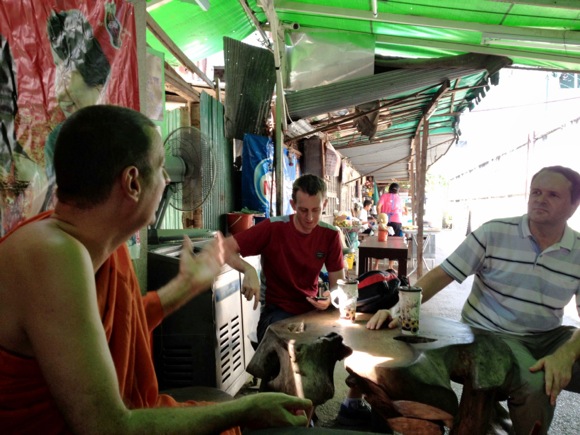
Phra Pandit explaining the history of his temple to Matt and Richard.
According to one source, the temple was built five centuries ago, but has been improved and renovated many times since then – today it’s well known for its large size, foreign monks, and history of valuable amulets. It was also home to abbot Phra Mongkok-Thepmuni, aka Luang Phor, a widely respected monk whose pictures I’ve seen all over the place but without knowing any of his history.
Phra Pandit showed us around the extensive grounds and lush gardens of the temple, including the point where three different khlongs converge. Back in the day, the temple was only accessible by boat, but obviously things have changed.
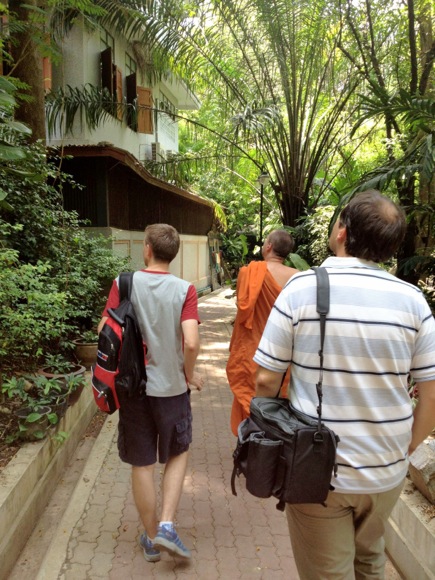
Touring the gardens.
One of the most interesting things we saw was the new chedi, for which finishing touches were still being applied. It was unusual in that it was hollow, with four stories inside that will be used for meditation and displays of valuable relics and Bhuddist items. Some of the work inside was gorgeous. On the top floor there was a huge domed roof and in the center of the room a giant chedi made entirely out of glass shards. The detail was astonishing.
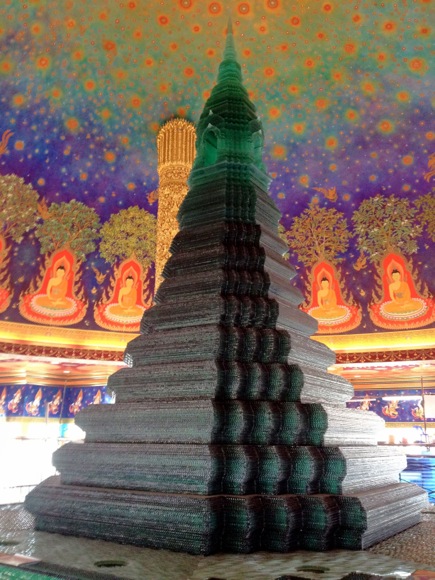
Each piece of glass is about the size of your hand. Around the base of the glass chedi was even more glass, this time designed and built in the style of mythical Naga serpents.
Around the base of the glass chedi was even more glass, this time designed and built in the style of mythical Naga serpents.
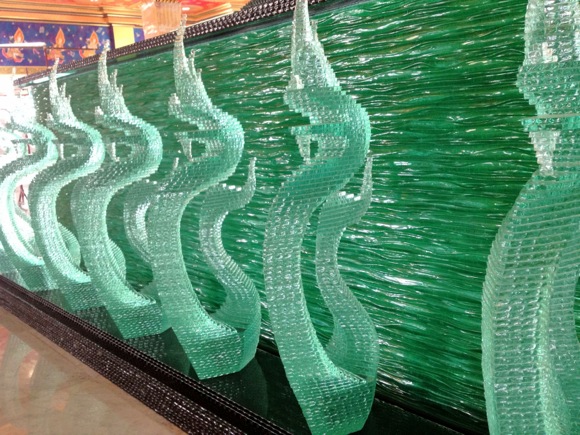
Every hour on the hour, smoke came out of their nostrils. Note: this is not true.
And if that weren’t enough, painters were still putting the finishing touches on the intricate artwork that decorated every inch of the huge dome. All done by hand!
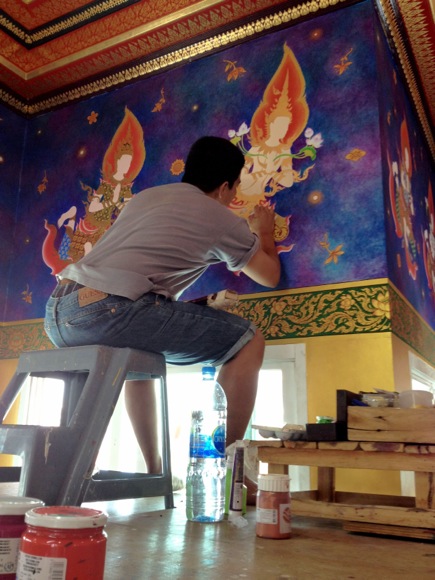
These dudes could make some seriously good fake money.
One of the most interesting aspects of temple life that Phra Pandit explained was that it’s really not much different from any large group of people living together. From a western perspective we imagine monastery life to be one of eternal zen-ness, steeped in the pursuit of knowledge and the perfection of harmony. In reality, there are the same types of squabbles and rivalries over space, facilities, personalities and free time that just comes as second nature to most humans. But in the end, the pursuit of Dhamma wins out, and ultimately, everyone is on the same page.
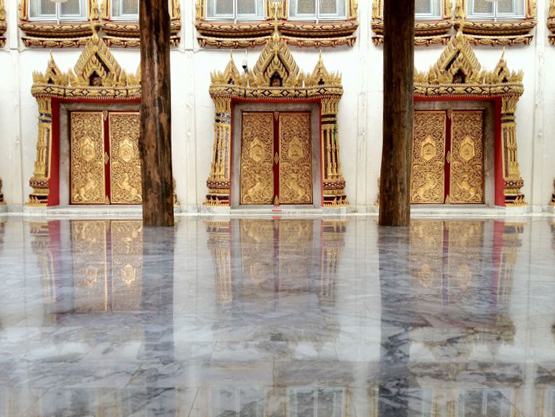
The entrance to the canteen. Pretty nice.
Finally we stopped at the main prayer hall, where several people were quietly kneeling on the floor doing their thing.
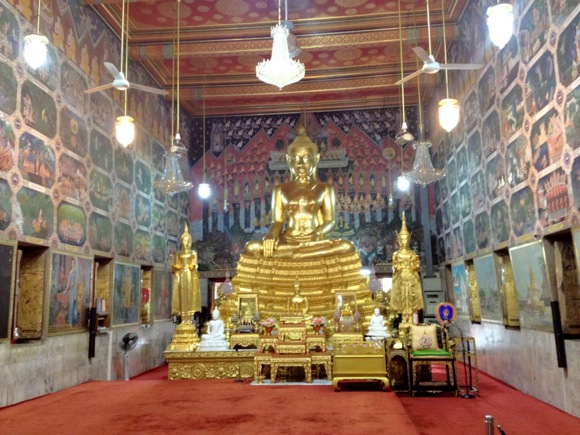
Shhhh…
It was a great day and we really appreciated the opportunity to see the temple, and Phra Pandit’s time showing us around. My hat is off to those who have spent time exploring and learning about some of the other 40,000+ temples in Thailand, and if you get a chance, I urge you to do the same too. Like I said, it’s easy to see them as just another gilded monument to Buddhism, but some have some pretty fascinating stories if you’re able to scratch beneath the surface.
After that, it was a nice ride down to the river to catch the ferry to the mercifully air-conditioned BTS.
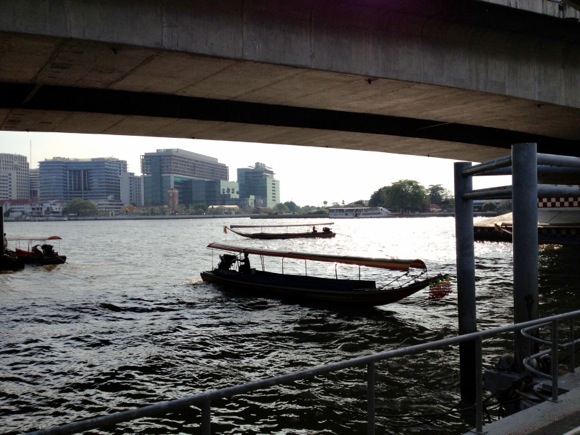


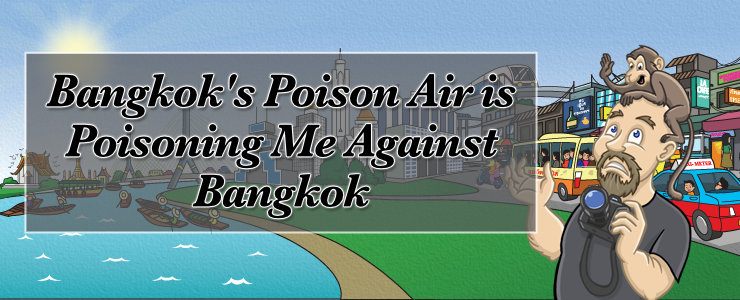
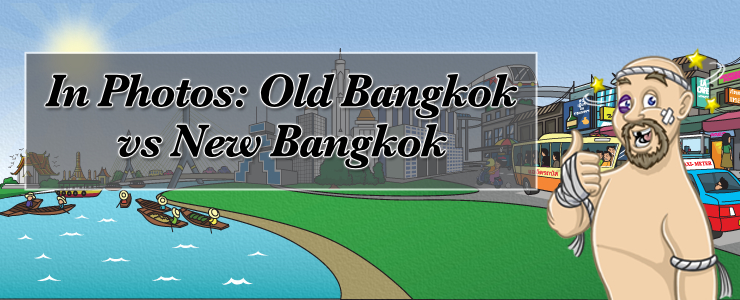
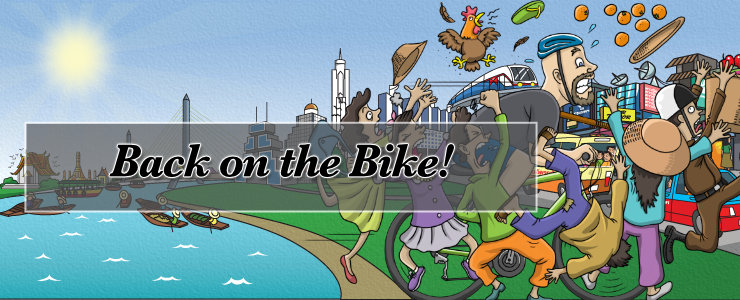
Sounds like you had a great day!
Thank you! :O)
I have bee wondering about the great white stupa while driving along Rajapruek Road between Baromrajchonanee (used to be called Buddhamonthon and before that Pinklao-Nakornchaisi) Road and Sathorn Road and now I have an introduction to the real site too!
What a delightful insight – worth to follow by a visit…
Glad you finally know what it is! It's always interesting to find out the details of something you always see but don't know any details for.